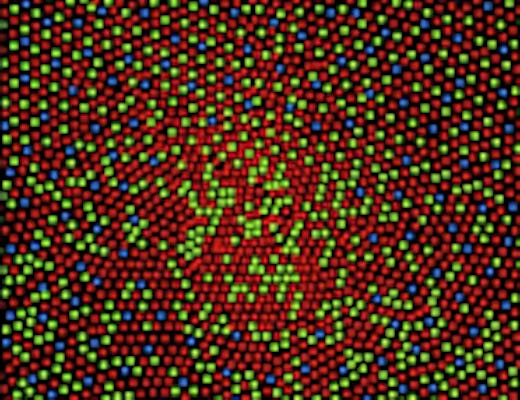The 4 Most Common Spectrometer Applications
Spectroradiometers are used to separate, quantify, and analyze the spectral characteristics of a light source, providing industry-specific insights based on a light’s wavelength intensities or frequency.
Spectroradiometers use a grating to split light into wavelengths of different bandwidths and funnel that light through the spectrometer using integrated concave mirrors. These high optical throughput components ensure a maximum amount of sampled light reaches a high sensitivity sensor for analysis. High-end spectrometers may even include a series of optical filters or a filter wheel to improve the equipment’s wavelength range, enabling a higher dynamic range of light over the entire wavelength range of the device.

Spectrometers are used in numerous industrial and commercial sectors, where precise lighting parameters are vital for meeting product specifications or health and safety regulations. This article will explore the four most common applications of spectrometers in some more detail:
Display Spectrometers
Display technology has grown exponentially in recent years, with emerging technologies such as organic light emitting diodes (OLEDs) challenging the conventional liquid crystal display (LCD) market. Digital devices such as smartphones, tablets, and televisions are subsequently built with more vibrant and dynamic displays than ever before. Spectrometers have been instrumental in supporting this period of growth and innovation, finding use in process and quality control applications.
The Neo series advanced spectrometer is routinely used during the production of LCD and OLED based display technologies as a master instrument to adjust the display’s optical characteristics and maintain exceeding levels of batch-to-batch consistency combined with several colorimeters like the Hyperion or MSE series.
Lighting Spectrometers
Light emitting diodes (LEDs) and solid-state lighting (SSL) have effectively supplanted halogen and fluorescent bulbs due to their superior levels of efficiency and tuneability. It is increasingly possible to fine-tune the optical characteristics of LEDs and SSL to display distinct aesthetic characteristics, such as dimming or changing colors. This is all enabled through improved interconnectivity between devices, greater digital driver quality, and fundamentally better light measurement technology.
Spectrometers are crucial for enabling the growth of LEDs and SSL, by maintaining exceptional optical characteristics or products throughout production, thus enabling new functionalities. The Neo series spectrometer is capable of measuring for multiple lighting parameters, including spectral power distribution, color, and color rendering properties. These parameters can, for example, be used to match white points of different LED luminaries between product batches
Spectrometers for Analysis Solutions
The analysis of a translucent materials’ optical qualities requires highly accurate spectrometry equipment, often integrated as a system with additional devices like stabilized light sources to ensure optimized stability between measurements. More advanced types of these measurements include measuring the fluorescence or reflectiveness of samples and light sources can be quantified by coupling a highly sensitive spectrometer with a stable light source and measuring the differences or spectral changes between incident light and that which is transmitted or attenuated. These analytical methods may be applied for the characterization of materials or layer thicknesses of anti-reflective coatings on translucent materials.
Admesy’s Neo series high-end spectrometer integrates multiple calculation methods within the device, reducing processing power for analytical methods that require multiple energy-intensive processes.
OEM Spectrometers
Original equipment manufacturers (OEM) commonly rely on light measurement specialists to provide suitable spectrometers for integration with their own innovative machinery. The potential applications for OEM integration of spectrometers are significant, which is why high-end spectrometry equipment is increasingly equipped for flexibility and configurational variation. This enables individual customers to configure the spectrometer to their unique specifications, gaining the full potential of the measuring component and improving the functionalities of their own products.
The Neo series is built to be fully integrational with OEM, with a broad wavelength range of 250 – 1100 nm depending upon the product application.
Spectrometers from Admesy
Admesy prepares advanced spectrometers for numerous commercial sectors, providing solutions for R&D, process control, and product innovation. If you would like any more information about the Neo series, or any of our other spectrometers, please do not hesitate to contact us.

